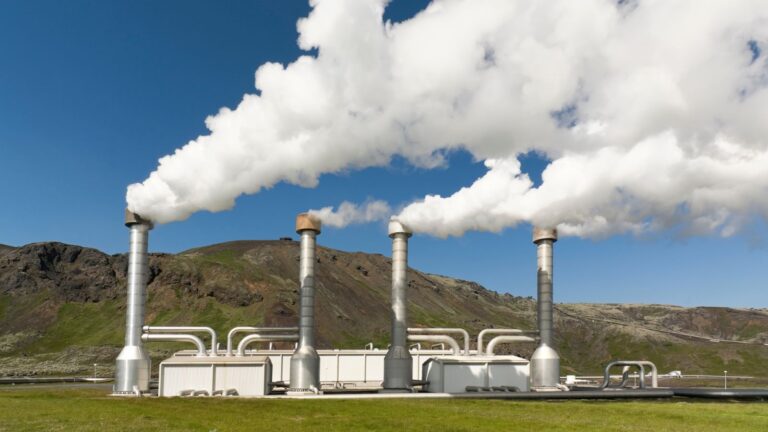This response reflects the authors’ understanding of key points made in the course of the discussion. It does not necessarily represent the views of the Center on Global Energy Policy. The summary may be subject to further revision.
Contributions to SIPA for the benefit of CGEP are general use gifts, which gives the Center discretion in how it allocates these funds. More information is available on our Partners page. Rare cases of sponsored projects are clearly indicated.
The following document includes the responses submitted to the Department of Energy following the request for information on proposed national definition of a zero emissions building.
Dr. Harry Kennard, Buildings Policy Lab.
February 5, 2024
Section A: Overall
Are the draft criteria clear and appropriate for the definition of a zero emissions building? Should any other criteria be considered for Part 1? Please provide specific feedback about this draft definition.
The goal of establishing a national zero emissions building definition is an essential step toward meeting aspirations to minimize greenhouse gas emissions associated with the US building stock. In its present form, aspects of the draft criteria are not sufficiently specific to meet the goals set out in the draft.
The definition would benefit from clarification and further specification of several key terms. As stated in the draft, Part 1 aims to define buildings that conform to zero on-site operational greenhouse gas emissions. The present state of the definition would preclude the inclusion of buildings that make use of net-zero greenhouse emissions energy sources, such as biogas or renewable natural gas. These fuels have the potential to be net-zero carbon across their lifecycle even though they emit carbon dioxide at the point of combustion.
The requirement that buildings be in the top 25% of energy performance is not necessarily required for the building to be on-site zero emissions. While high-efficiency buildings reduce overall energy demand, it is conceivable that a high-efficiency building that uses fossil fuel sources might have higher emissions than a low-efficiency one powered by 100% renewable energy, for example. This point is explored further in the following responses.
The use of “clean energy” in point 3 conflates two key concepts. The first relates to emissions of greenhouse gasses. For this, “carbon-free” is a concept that crucially depends on the boundary of greenhouse gas emissions analysis used to determine emissions. The inclusion of “off-site” energy sources to be carbon-free requires carbon emissions accounting of the grid used to power the building, and clarification as to whether carbon credits could be purchased, either to offset the emissions associated with the delivered power or ensure that the share of electricity used by the building was available on the grid and not double counted.
The second reading of “clean energy” relates to non-greenhouse gas emissions that are relevant for health. These are sources that don’t produce particulate matter, nitrogen oxides, carbon monoxide, and other combustion byproducts. This is particularly relevant in relation to biomass, which can be zero or negative carbon, provided forests or feeds are regrown and deforestation avoided, but typically produce high levels of particulate matter (see link). The present definition should be amended to clarify whether biofuels, biomass, and other low-carbon fuels would qualify. The consideration of population health is essential in this regard.
Section B: Energy efficiency criteria.
Should energy efficiency be considered a criteria for the definition of a zero emissions building? If the efficiency of an existing building should be considered, do you agree that requiring energy performance in the top 25% of similar buildings is an appropriate measure of energy efficiency for this definition? (ENERGY STAR® score of 75 or above.) Should it be higher or lower? Are there other benchmarks or approaches that should be considered? For an existing building, is one year of measured energy performance an appropriate requirement for demonstrating efficiency or is another approach appropriate?
The consideration of energy efficiency is welcome in the broad context of decarbonizing the national building stock, improving energy security, and addressing equity issues regarding affordability. However, it is not essential to meeting the goals of establishing a national zero emissions building definition per se. Rather, energy efficiency measures are tools that should be prioritized in the development of a net-zero building stock overall. This distinction is further outlined by the World Green Building Council (see link).
In addition, the following potential issues arise with respect to the inclusion of a relative energy efficiency measure. First, the definition regarding existing buildings that places them “among the top 25% most efficient buildings in the market with a similar use” depends on where the comparison population of buildings is located. The ENERGY STAR system does adjust for gross floor area, occupant number, and local climate (see link). However, a careful analysis of the distributional impacts of these adjustments should be carried out before the energy efficiency requirement is embedded in the definition.
Second, as the building stock becomes more efficient, those buildings that were at the margin of the top 25% most efficient buildings in a given year would likely no longer qualify in future years as the least efficient buildings of that type were improved. An alternative approach would be to adopt an energy use per square foot measure. For example, the recent update to Danish Building Code requires building energy use for new buildings to fall under a threshold that becomes increasingly stringent over time (see link).
For existing buildings, are the draft criteria appropriate for single-family homes? Are there other benchmarks that should be considered for single-family homes?
As suggested in the previous response, a full equity impact analysis of the adjustment process of the ENERGY STAR system should be conducted. For example, according to the technical guidance, household size is capped at 6 (see link). The impacts on how likely a family home with a large number of occupants is to qualify given this adjustment is unclear and should be studied.
For new construction, are the draft criteria appropriate? The modeled building performance is at least 10% lower than the energy use according to the latest version of IECC or ASHRAE 90.1 (e.g. model energy code) and the building is designed to achieve an ENERGY STAR design score of at least 90 (for eligible buildings). Are there other benchmarks that should be considered?
The proposed benchmarks are widely recognized for new buildings. The central issue with respect to new building energy use, and building energy use in general, is the inadequacy of building energy models to account for divergences between design, construction, and operations. Appropriate on-site certification during the construction process is essential to ensure designed build quality is being met. Occupant behavior can also produce dramatic differences between designed energy use and actual energy use. See for example (see link) a report that found that of the 10 case study buildings considered, two performed better than models predicted (1.5% to 29.3% less energy in actual performance) and the remaining 8 performed worse (between 22.1% and 281.7% more energy in actual performance).
For new construction, are the draft criteria appropriate for single family homes? Are there other benchmarks that should be considered for single family homes?
N/A
Section C: On-site emissions from energy use.
Should there be an exemption allowed for emission producing emergency generation? Are there any other exemptions needed?
The presence of emergency backup generators should not disqualify a building from being categorized as zero emissions, provided it was clear that the use of such measures was limited to situations where grid power or the zero emission energy source was unavailable due to weather events. An appropriate time scale on the order of weeks could be determined for the use of such emergency measures.
Should biofuels consumed on-site be allowed? If so, how?
The use of biofuels as building fuel is only net zero if the biomass input is replaced by new growth. There is a risk that the inclusion of biofuels might drive land use change and deforestation if unregulated sources of timber are included. Furthermore, the contribution of biofuel use to air pollution might be substantial if there is widespread adoption of biomass boilers and furnaces in homes. Despite this, there has been substantial benefit with respect to greenhouse gas emissions in the transport sector from the inclusion of ethanol in the fuel mix. This issue should be further studied and a full set of potential unintended consequences assessed.
Section D: Clean energy generation and procurement.
Are the clean energy criteria provided appropriate for this definition? Are there
other clean energy criteria that should be considered? Should community solar qualify for the requirement? If so, how?
As addressed in question 1, the present definition of “clean” is insufficiently specific. However, community solar is zero-carbon and zero-particulate emissions and therefore should qualify.
Should there be a proximity requirement for off-site power used to meet the clean power criterion? If so, how should a proximity requirement be implemented (e.g., regional definition, phase-in, etc.)?
N/A
Section E: Documentation is important for effective implementation.
Should organizations leveraging the definition be able to determine whether buildings
have to meet it annually, one time, or on a different frequency?
Ongoing assessment of the building stock is necessary to ensure compliance remains over time. If the zero emission building definition is considered to be a best-in-class accreditation, it is essential that the confidence is maintained with regular auditing. An annual basis would be appropriate for buildings over a threshold size—i.e., the largest emitters of greenhouse gasses at present. For single-family homes, the assessment could be determined at the point of sale, as is the case in European Energy Performance Certification.
If the definition is extended to single family homes, what documentation should be required?
N/A
Are licensed professional and third-party certification bodies the appropriate parties to independently verify the documentation that a building has met the definition? Beyond existing government resources such as EPA’s ENERGY STAR Portfolio Manager, are there other methods to verify meeting the zero emissions building definition?
N/A
What time frame should be used for GHG calculations (i.e. hourly, monthly by year, annually)? Explain how this would be implemented effectively across the market.
N/A
What other verification criteria are necessary to make this definition useful for the marketplace?
N/A
Are there any issues regarding conflict or synergy with regional, state or local energy and climate programs that ought to be addressed?
N/A
Section F: Use cases
Is it important for a national definition to cover all building types, including commercial, multifamily, and single-family?
Yes. Emissions from the building sector are approximately evenly distributed between commercial and residential portions (see link).
Are there any other recommendations that would help clarify and improve the definition?
N/A
While Part 1 of the definition focuses on operating emissions, what other areas should be considered in future parts of the definition, such as embodied carbon, refrigerant, and grid interactivity?
As highlighted in previous responses, the complete assessment of lifecycle emissions associated with the building stock are essential in decarbonization. It should be noted that the relative share of operational vs. embodied carbon will vary geographically across the US. Regions with the highest heating and cooling degree days likely have the highest operational emissions nationwide relative to embodied emissions. Any future additional parts of a national net-zero/zero emissions building definition relating to embodied emissions should take into account the regions of the country where construction/renovation is likely to occur in the medium term.
Data quality for whole-life carbon emissions assessment is limited by the quality of the data of emissions intensity of building components, such as the concrete for foundations or steel for larger construction projects. Broadly speaking, these data tend to be of relatively lower quality in the construction sector than those associated with building operations (see, for example, box 5 relating to embodied emissions of brick, aluminum, and glass in the 2022 Global Status Report for Buildings and Construction [see link]).
Other questions or comments not included above.
N/A



